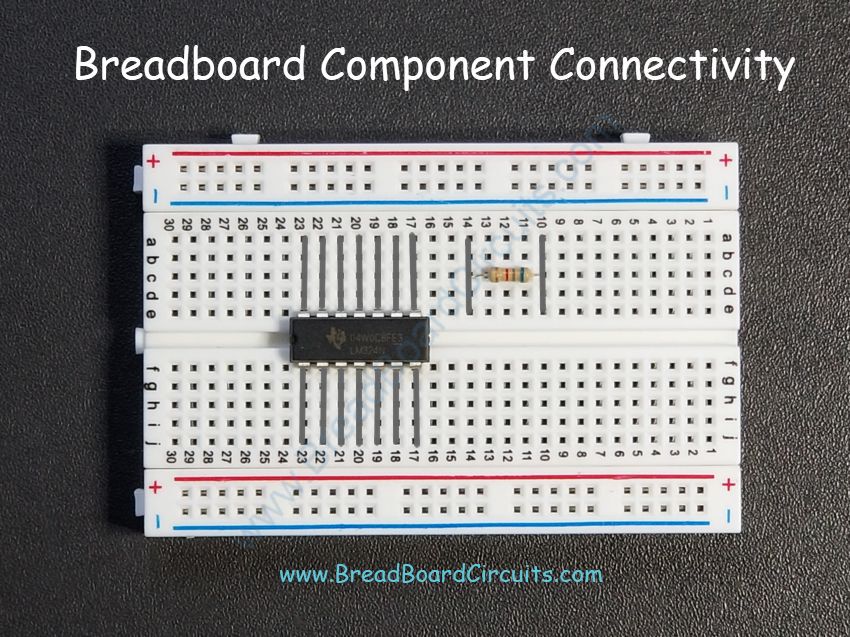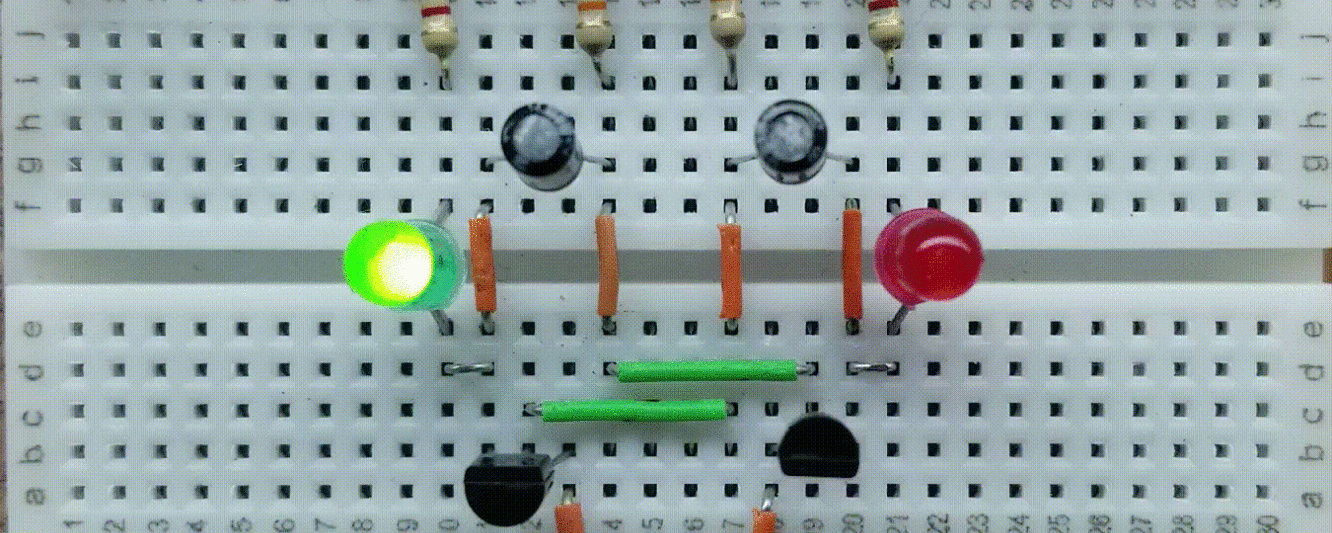Anatomy of a breadboard.
What’s Inside of the Breadboard
A breadboard is simply a plastic housing with holes, that contains rows of conductive slots configured in a way that makes temporary circuit construction and prototyping easy. Below is a picture of a typical breadboard next to the back of one, that shows how the conductive slots are physically arranged.

Breadboard Component Connectivity
The image below shows which underlying metal strips are connected to the inserted components. Any component that is plugged into the holes along these strips will be electrically connected to the portion of the component that is also plugged into a hole along that same strip.

How the Components Connect Together
The image below shows the relevant component connectivity along the underling metal strips. Aside from the power busses the image below shows where where the potential current paths are.

Resulting Schematic
Below is the schematic equivalent of the breadboard shown above.

Summary
Breadboards are easy and intuitive to use. Once you know how they are laid out, you can easily build your prototypes based on a schematic diagram.
For a better experience building breadboarded circuits, please see our page detailing the minimum recommended lab equipment for your electronics bench. Also, don’t forget to review the breadboarding safety and best practices page when building and testing breadboarded circuits.
Finally, for other interesting breadboarded circuits please visit the home page here or our YouTube channel here.
